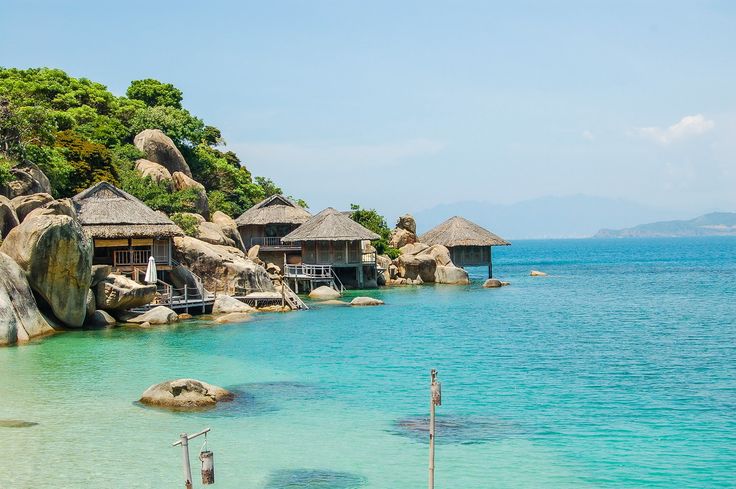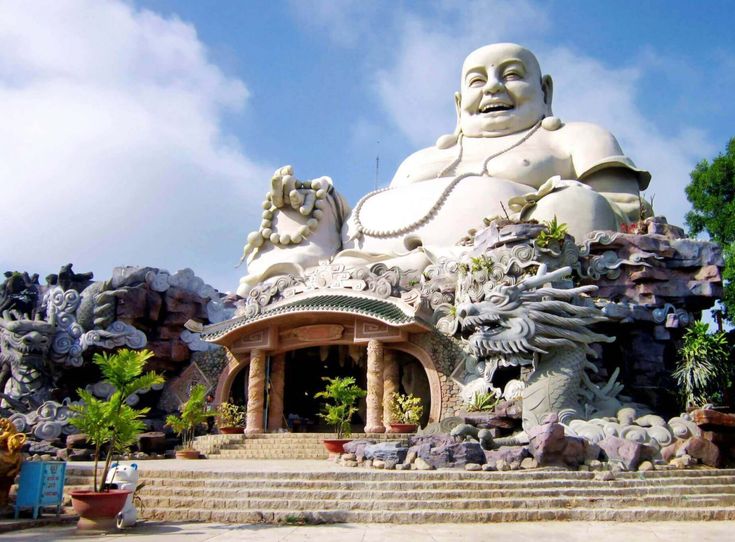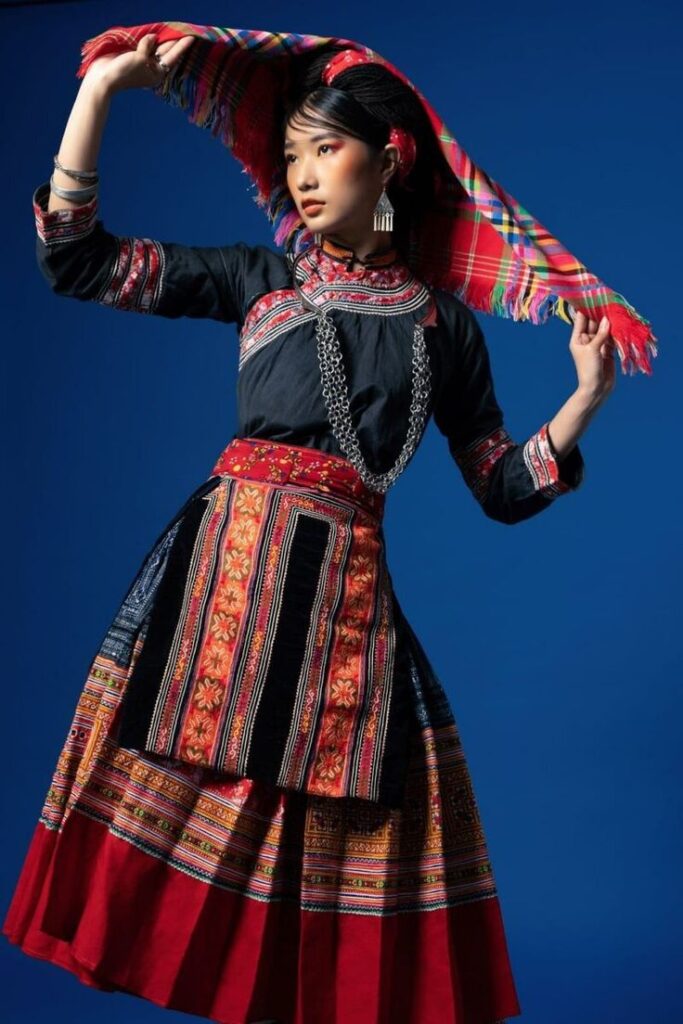Vietnam is a country in Southeast Asia that is well-known for its rivers, beaches, lively cities, and Buddhist pagodas. The capital city of Hanoi honors the country’s famous leader of the Communist era, Ho Chi Minh, with a massive marble tomb. Besides Vietnamese War history museums and the Củ Chi tunnels, which were used by Viet Cong soldiers, Ho Chi Minh City (previously Saigon) boasts French colonial sites. Vietnam’s colorful and expansive nature can have you strolling down the beach in the evening and sliding down a sand dune in the morning. It can be a true pleasure to travel here. You will witness the astounding diversity and beauty of nature in places like Sapa’s terraced rice fields and Halong Bay’s incredible karst formations. Other breathtaking scenery include those found in Vietnam.
1- Best time to visit Vietnam
When making travel plans to Vietnam, the seasons are the first thing you should think about. Vietnam experiences tropical monsoons, with wide regional variations in temperature. Let’s say you’d want to experience some moderate, dry weather in Vietnam’s breathtaking scenery, which ranges from the incredible karst formations of Halong Bay to the breathtaking terraced rice fields of Sapa. If so, November through April is when you’ll be able to take in the utter splendor and diversity of nature. At this time of year, there is the least amount of rain in the nation and the weather is pleasant.
The dry season in the southern region of Vietnam normally lasts from December to May, whereas the wet season runs from May to November. There are four distinct seasons in the northern part of Vietnam: Winter: November–January, Spring: February–April, Summer: May–July, Fall: August–October.

2- Be Prepared for the Weather
Vietnam has a tropical climate because of its closeness to the equator. Heavy downpours are common during the wet season, which may discourage many visitors. Bring a lot of summer clothing, such as breezy cotton tops and big sunscreen bottles. It’s also a good idea to bring an umbrella and a lightweight jacket. There are a lot of mosquitoes because of the tropical weather. Remember to bring along your bug repellent.
3- Make Sure you Adhere to Temple Etiquettes
Temple etiquette is really important in Vietnam. The country has a rich collection of temples that you can visit. Make sure that your shoulders and knees are covered inside the temple. When visiting Buddhist, Hindu, Confucian, and Taoist temples, churches, and other religious buildings, dress respectfully. It’s best to cover your legs and upper arms, and you may need to take off your shoes and hat to enter. Never touch someone on the head, and avoid pointing the soles of your feet towards another person or any Buddhist statues – both examples of disrespect in Buddhist culture. Even if the prayer mats are unoccupied, take care not to step on them, and avoid moving between the Buddha statue and anyone who is praying. Generally speaking, you are allowed to take pictures as long as you turn off your flash.

4- Shop responsibly
It’s forbidden to transport antiquities out of Vietnam, but there are some amazing modern crafts and artwork that would make excellent mementos. Additionally, keep an eye out for objects carved from animal parts, like feathers, horns, bones, teeth, and shells.
5- Don’t be scared to haggle; it’s a very common culture in Vietnam.
Vietnamese culture heavily emphasizes negotiating and haggling, particularly when there are visitors around. Markets and local stores are good places to practice negotiating. Tell them what you’re willing to spend, or ask for a “better price.” Prices are set in pubs and restaurants unless it’s happy hour! One of the most crucial things to understand before traveling to Vietnam is how to haggle.

6- Be a respectful photographer
Ask permission before snapping pictures of people, especially in villages where minorities live. Many people find it intrusive, so find out whether people are fine being in your trip photos by asking them first. While it’s reasonable for some locals in tribal areas to demand payment for pictures, imagine how you would feel if strangers were poking their long lenses into your front door.
7- You can try local beer
Of course, locally brewed beer is significantly less expensive than imported beer in every town. At one particular Hanoi streetside café, you should also have Bia Hoi (Bia Hơi). On the sides of the streets, people enjoy beers while seated on tiny plastic seats. Although this may appear absurd to visitors from other countries, Hanoi and Vietnam as a whole are known for it. Brewing a beer and observing the insane traffic is actually pretty entertaining. Just let it happen!
8- Tasty Cuisine
Fresh ingredients are commonly used in Vietnamese cuisine. It tastes great and is widely available. Vietnamese street cuisine has a very rich culture. Everywhere you look, you may see a lot of street food.
Vendors on tricycles can be seen offering bánh mì, a sandwich that is essentially a repurposed French baguette. Bánh cuốn (rice flour buns packed with ground pork, prawns, and wood ear mushrooms) may be sold by street vendors utilizing shoulder poles.
Additionally, essential components of street cuisine include beef noodle soup, bánh chưng (sticky rice wrapped in banana leaves and filled with lean pork, mung bean paste, and black pepper), and bánh bèo (rice flour pancakes).

9- What to wear day-to-day
In general, Vietnam has a very relaxed dress code. Your go-to daily outfits will include vest tops, light-weight t-shirts, and shorts or skirts. If you visit any mosques or temples, that’s the one occasion when you should consider your clothing choices more carefully.
10- Explore the National Outfit
Vietnam’s national garment, the ao dai, is now frequently worn by ladies. It is pronounced as “/ow yai/” in the south of Vietnam and as “/ow zai/” in the north. “Dai” means “long” in modern Vietnamese, and “ao” denotes a clothing that covers the torso below the neck.
For a lengthy gown, silk or other delicate fabrics are usually chosen. The sleeves and chest cut are precisely tailored to accentuate a woman’s beautiful curves. When the user walks, it floats in the air thanks to a high slit on both sides that runs from the bottom to the waist.
Women typically dress in long, wide-leg silk or other thin-fabric pants on the lower body. Women wearing ao dais are frequently seen riding motorcycles or bicycles.
One of the things you just have to do when visiting Vietnam is to stroll down the street while wearing an ao dai and a conical bamboo hat.

In Vietnam, the past and present coexist together, creating a country of contrasts. For every traveler, its varied landscapes and rich cultural legacy ensure an amazing experience. Vietnam has something for everyone, whether they are looking for adventure, leisure, or cultural immersion. From beaches and waterfalls to mountains and jungles, Vietnam has it all. If you choose to discover it, you’ll be rewarded endlessly. Join us in organizing your journey and set out on a remarkable journey across this captivating nation with our customized travel packages.

